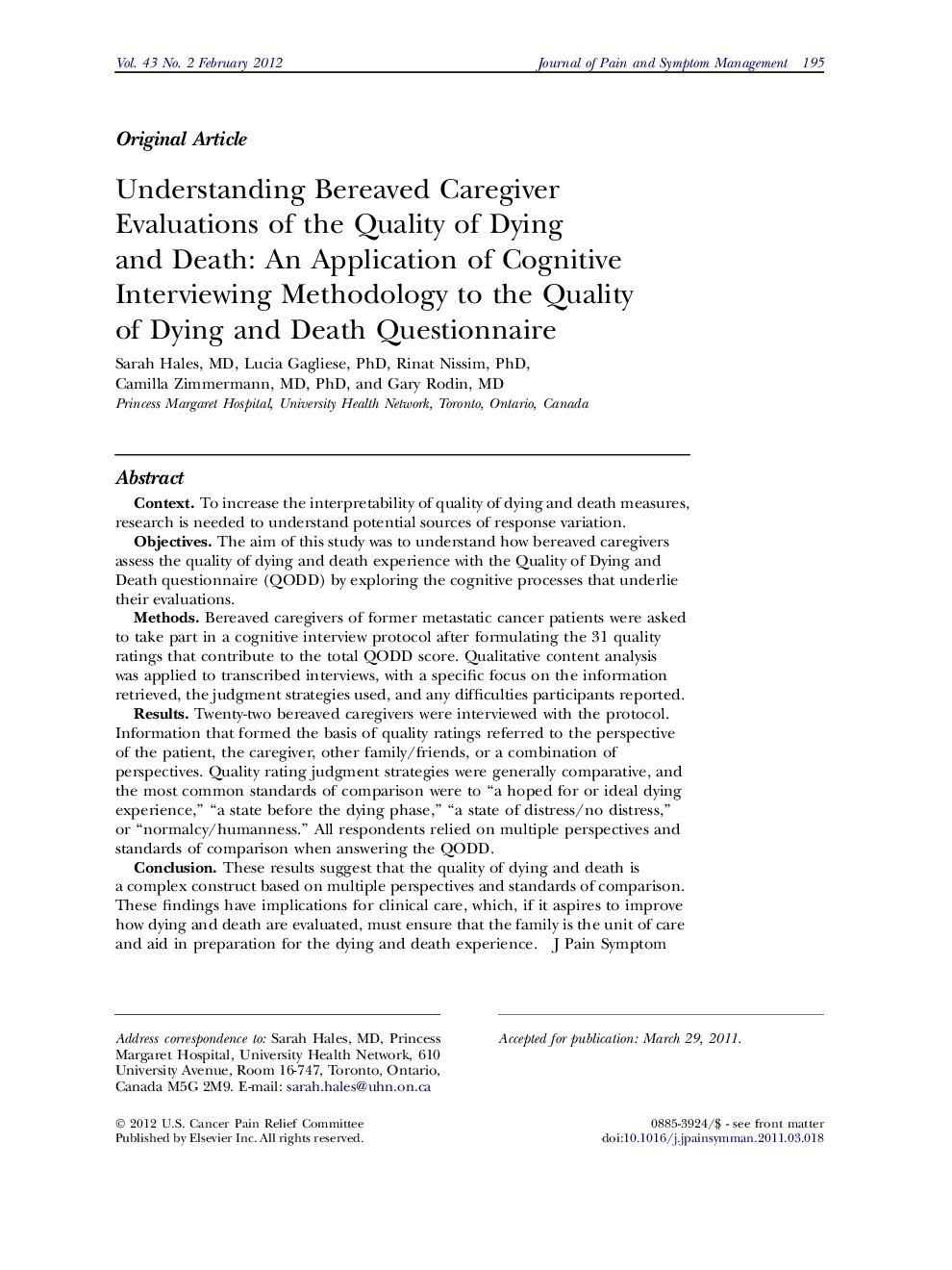| Article ID | Journal | Published Year | Pages | File Type |
|---|---|---|---|---|
| 2734381 | Journal of Pain and Symptom Management | 2012 | 10 Pages |
ContextTo increase the interpretability of quality of dying and death measures, research is needed to understand potential sources of response variation.ObjectivesThe aim of this study was to understand how bereaved caregivers assess the quality of dying and death experience with the Quality of Dying and Death questionnaire (QODD) by exploring the cognitive processes that underlie their evaluations.MethodsBereaved caregivers of former metastatic cancer patients were asked to take part in a cognitive interview protocol after formulating the 31 quality ratings that contribute to the total QODD score. Qualitative content analysis was applied to transcribed interviews, with a specific focus on the information retrieved, the judgment strategies used, and any difficulties participants reported.ResultsTwenty-two bereaved caregivers were interviewed with the protocol. Information that formed the basis of quality ratings referred to the perspective of the patient, the caregiver, other family/friends, or a combination of perspectives. Quality rating judgment strategies were generally comparative, and the most common standards of comparison were to “a hoped for or ideal dying experience,” “a state before the dying phase,” “a state of distress/no distress,” or “normalcy/humanness.” All respondents relied on multiple perspectives and standards of comparison when answering the QODD.ConclusionThese results suggest that the quality of dying and death is a complex construct based on multiple perspectives and standards of comparison. These findings have implications for clinical care, which, if it aspires to improve how dying and death are evaluated, must ensure that the family is the unit of care and aid in preparation for the dying and death experience.
